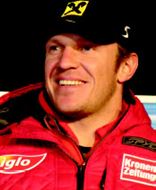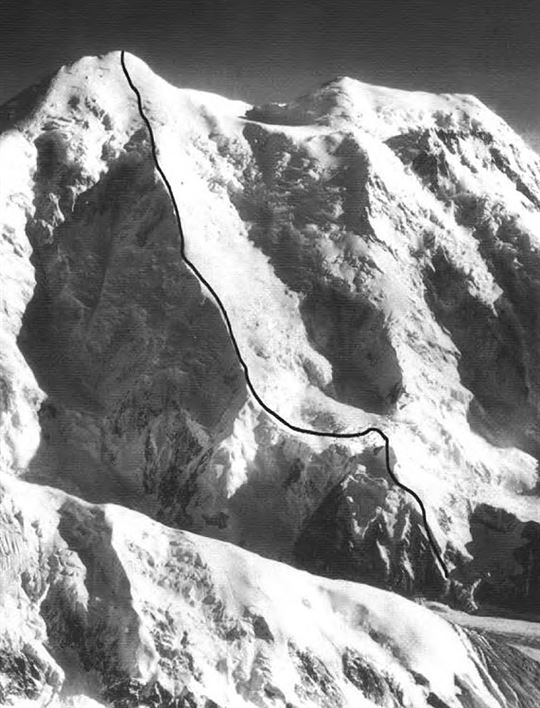No longer Miller time
Warren Miller coined the phrase: “If you wait until next year to do it, you’ll be one year older when you do.” Yet, according to court documents, it seems that Warren Miller Entertainment Inc. (WME), the company that currently produces Warren Miller movies and owns the rights to the Warren Miller brand, is of the opinion that Miller can’t speak those words anymore.
Miller sold his film company to a predecessor of WME in 1988. WME is owned by Bonnier Corporation, a subsidiary of a Swedish media conglomerate with operations in 21 countries.
On September 21, 2009, WME launched the largest ski media lawsuit to date against Level 1 Productions, a Denver-based ski film producer, surrounding Level 1’s interview and use of Miller in its latest release, Refresh. Though WME did not name Miller as a defendant, the icon has since stepped into the mix and applied to the court as intervener because in his opinion the lawsuit “is something that never should have happened.” According to Miller, if WME takes issue with the interview and authority he gave to Level 1 to use his name, voice and likeness, its complaints should be directed toward him, not Level 1.
In addition to damages for trademark infringement, WME is seeking an order preventing Level 1 from showing or selling the movie and requiring Level 1 to destroy all copies of the film. So if you’re a diehard fan and you’re interested in seeing Refresh, better watch it now—next year could come too late.
—Chris Lennon
SKIER SCUTTLEBUTT
Fancy-pants Porter Airlines has added more roof racks to its aircraft this winter to accommodate skier demand. Three flights daily to Quebec City from Toronto’s City Centre Airport seems just about right given the three great ski areas nearby: Mont-Sainte- Anne, Le Massif and Stoneham. Plus, Porter has increased its direct Tremblant Excite Flights to eight a week. What are you doing next weekend? See Ultimate Ski for the best advice.
“The Edge…there is no honest way to explain it because the only people who really know where it is are the ones who have gone over.”
Hunter S. Thompson might have lived in Aspen but if he’d chosen Whistler, he might have at least found that edge. And who better to lead you to, and over, than Extremely Canadian? Offering an array of popular steep clinics (or if you prefer a la carte, you can have your couloir to yourself) with some of the best expert-instruction coaches, ExCan is hoping skiers will appreciate the opportunities this winter will bring. And it’s not just because it’s an El Niño year that everyone is expecting big snow—there’s nothing like a race to ensure lots of soft and fluffy. Extremely Canadian
![]()
 At the magic number of 54—that’s World Cup wins, not his age, he’s 37 in December— one of the world’s greatest ski racers, Austrian Hermann Maier, retired in November. Although he nearly lost his entire leg in a motorcycle accident years ago, it was continual knee problems that forced him into retirement just before the 2010 Games. Only Ingemar Stenmark beat The Herminator for most World Cup wins.
At the magic number of 54—that’s World Cup wins, not his age, he’s 37 in December— one of the world’s greatest ski racers, Austrian Hermann Maier, retired in November. Although he nearly lost his entire leg in a motorcycle accident years ago, it was continual knee problems that forced him into retirement just before the 2010 Games. Only Ingemar Stenmark beat The Herminator for most World Cup wins.
![]() Renting gear this year instead of schlepping it to and from Whistler? Make life even easier: hire a butler. Whistler is the latest resort to offer Ski Butlers rental delivery for those who prefer to do their gear fitting in their hotel room or condo. Stressfree delivery, support (if something’s not right) and, when the holiday’s over, leave it for the butler to collect. That was easy. Reserve online: Ski Butlers
Renting gear this year instead of schlepping it to and from Whistler? Make life even easier: hire a butler. Whistler is the latest resort to offer Ski Butlers rental delivery for those who prefer to do their gear fitting in their hotel room or condo. Stressfree delivery, support (if something’s not right) and, when the holiday’s over, leave it for the butler to collect. That was easy. Reserve online: Ski Butlers
![]() American school kids may not get a March Break, but Aspen knows many Canadian children do. All March, sun-seeking skiers who book through tour operators like Merit Ski Vacations or Skican receive a free kids’ lift pass for each paying parent, or grandparent.
American school kids may not get a March Break, but Aspen knows many Canadian children do. All March, sun-seeking skiers who book through tour operators like Merit Ski Vacations or Skican receive a free kids’ lift pass for each paying parent, or grandparent.
WINTER WEATHER WARNING
Buy fat skis now
This just in from the Ski Canada Oceanographic Weather Station—yes, the middle of the Pacific ocean is warming fast. Sea surface temperatures earlier in November were running up to 2.5 degrees Celsius above normal, meaning a pretty serious El Niño event. There are no known inoculations.
How long will it last? Hard to say, but El Niño typically runs up to a year or more. Expect milder air to push into North America from the Pacific this winter. Typically this means a zonal jet stream flow (a relatively horizontal jet across the continent) which bottles up Arctic air north of most Canadian ski areas.
As in the past, this may prove to be another epic snow year at altitude: warm, moist air riding over the ranges of B.C. and hitting the Rockies. Add to this warmer-than-normal ocean temps across most of the northern hemisphere, especially in the Arctic, with a relentlessly progressing greenhouse effect through CO2 accumulation in the atmosphere, and it’s safe to say the winter of 2010 won’t be “normal.”
Given big-mountain skiers currently reign as le genre du jour, you’d think title sponsorship at the Canadian Open Freeskiing Championship at wild, woolly Red Mountain would be grabbed by the Fun& Games Department of Red Bull, Virgin Mobile or Juicy Fruit. But Stikeman Elliott!? One of the country’s most important corporate law firms took the lead as presenting sponsor this year, giving new meaning to the category “Open Senior Competition” which takes place January 21-23 on Mount Roberts (see Canada’s best off-piste descents). Okay, so the decision was made by the Vancouver office, not from SE’s Bay Street tower, but is it a reminder that the ski industry is indeed greying? Then again, it’s all relative given “seniors” at the event are all competitors over the age of 19.
Life begins at 40
Fifteen years ago, Arnie Wilson, Britain’s most prolific ski writer, skied every day of the year, 240 resorts in 13 countries—a feat that took him into the Guinness Book of Records. Now he is about to complete another mission that will likely also be a first: skiing in the 40 U.S. states where organized skiing (with lifts) exists.
“I’ve always been fascinated by what the Americans call “ma and pa” ski hills,” says Wilson. “They don’t have a fraction of the corporate clout, or size, of the Vails, Aspens and Sun Valleys, of course, and recreational skiers limited to one ski holiday a year
would pooh-pooh going near them. But they are, in many ways, a comforting reminder of the pioneering days when ski areas were small, friendly and intimate.”
Wilson has already skied Tennessee, North Carolina, Kentucky, the Virginias and even Alabama. “This coming winter I am making a determined attempt to complete the task and my sights are set on New Jersey, Ohio and the alpine Mecca of Rhode Island. I’m saving Arizona till last. No particular reason. Just happens to be the last one on the list—although the state has a choice of four ski areas.”
Wilson has skied in 25 countries over the last 35 years, sharing chairlift rides and après ski with the likes of Arnold Schwarzenegger, Franz Klammer, the Crazy Cannucks, Clint Eastwood, Princess Caroline— and his wife, Vivianne.
And what’s next? “After I’ve done the U.S., I thought I might work on skiing in every Canadian province. I’ve been to B.C., Alberta and Quebec, of course, but I believe you can ski in all the others as well as the Yukon, but there doesn’t seem to be any organized alpine skiing in Nunavut or Northwest Territories.” Not yet anyway.
First time for everything

Mountain ranges don’t come much bigger than the Alaska Range, home to Mount McKinley (aka Denali)—at 6,136 metres North America’s highest— or its equally massive neighbour Mount Foraker at 5,303. What puts the Alaska Range into its own league is not the actual height of the summit—more than two vertical km below Mount Everest—but what climbers call the “vertical relief” or the elevation difference between base camp and summit.
To descend safely from a summit, ski mountaineers have to avoid the often near-vertical
pitches that climbers covet. What elite backcountry skiers are looking for is a steep, continuous flowing line with minimal objective danger from crevasses, rockfall and avalanches. Add to that the fact that most mountains have multiple routes up and down, and the criteria for what makes a great ski descent is fairly nuanced.
Whether climbing or skiing, routes have to be “in condition,” and in the Alaska Range that usually means skiing in—oddly enough—June, when weather patterns stabilize enough to allow for safe travel. With almost continuous daylight, parties can push their limits and not worry about climbing or skiing in darkness.
Foraker’s lower altitude doesn’t make it as well known as McKinley, but it’s certainly a mountaineer’s mountain. Huge and with multiple spines (or ridges) spilling from its sprawling summit, the Archangel Ridge had never been skied before, despite its
proximity to McKinley. Part of the reason is that it faces pretty much in the opposite direction from the Kahiltna air strip and the relative safety of the climbing ranger camp on the other side of the mountain. Radio coverage, to say nothing of rescue, is not on the table if things go wrong.
Last July, two Whistler-Blackcomb patrollers put new meaning on the term “big vertical” by snagging the Archangel’s first descent. Done in light and fast alpine style, Marcus Waring and Ryan Bougie first skied/climbed from base camp (2,164 metres) to the top of Foraker, descended more than 3,353 vertical metres down the Archangel Ridge and then climbed up Mount Crosson (3,901 metres) to return to their starting point. Minutes after summiting, Waring lost an edge on the rock-hard glacier ice and took a tumble, which could have had tragic consequences had he not slowed his speed on a patch of windblown powder. Overall conditions encountered on the way down ranged from horrible crust and blue ice to blissful powder. The ambitious four-day effort took place under bluebird skies and long, midnight-sun daylight. During one epic push, the duo climbed and skied for 17 continuous hours without stopping. A complete account can be found on Doglotion.
—Steven Threndyle



